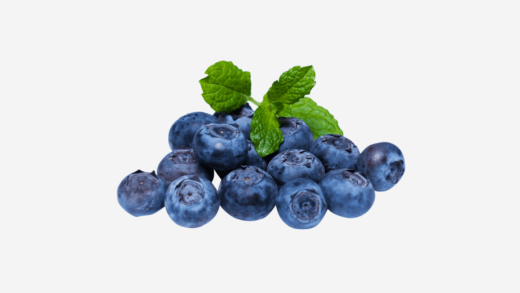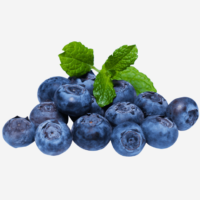What is Amla? Amla is the common name for the fruit of the plant Emblica officinalis, which is a tree native to India. The fruit is also known as Indian gooseberry. Amla is a small, round fruit that is yellow-green in color and has a sour taste. It is a rich source of vitamin C and is used in traditional medicine to treat a variety of ailments. In Ayurveda, the traditional medicine system of India, amla is considered a “rasayana,” or a substance that promotes longevity and overall health. It is often used as a tonic to improve digestion and boost the immune system. The fruit is also used in hair care products and is believed to help promote healthy hair growth.
Table of Contents
What is the source of Amla?
Amla is the common name for the fruit of the plant Emblica officinalis, which is a tree native to India. The tree is native to the Indian subcontinent and is found throughout the country, as well as in Nepal, Bangladesh, and Pakistan. Amla fruit is also grown in other tropical and subtropical regions of the world, including Southeast Asia and the Caribbean. The amla tree grows to a height of 15-20 feet and has a spreading crown. The tree has small, white flowers that are followed by green or yellow-green fruit. The fruit is round and about the size of a cherry, with a thin, waxy skin. It has a sour taste and is often used in cooking and in traditional medicine. Amla is widely cultivated in India and is an important crop for many farmers. The fruit is harvested in the fall and winter months and is used fresh or dried for use in a variety of products, including supplements, hair care products, and traditional medicine.
Amla Nutrients per Serving
Amla fruit is a rich source of nutrients, including vitamin C, calcium, phosphorus, iron, and carotene. One serving (100 grams) of amla fruit contains the following nutrients:
- Vitamin C: Approximately 700 milligrams, which is more than 11 times the daily recommended intake for an adult
- Calcium: Approximately 50 milligrams
- Phosphorus: Approximately 50 milligrams
- Iron: Approximately 1.2 milligrams
- Carotene: Approximately 0.7 milligrams
Amla fruit is also a good source of dietary fiber and antioxidants. In addition to the nutrients listed above, amla fruit contains other vitamins and minerals, including vitamin A, vitamin E, and vitamin B complex. It also contains amino acids, flavonoids, and tannins.
Health Benefits of Amla
Amla fruit is believed to have a number of health benefits due to its high nutrient content and antioxidant properties. Some of the potential health benefits of amla include:
- Boosting the immune system: Amla is a rich source of vitamin C, which is known to boost the immune system and help protect against infections.
- Supporting digestion: Amla has a high fiber content, which can help to support healthy digestion and prevent constipation.
- Promoting healthy skin: Amla is believed to have antioxidant and anti-inflammatory properties that may help to protect the skin and promote healthy skin tone.
- Reducing the risk of heart disease: Amla is thought to have cholesterol-lowering properties and may help to reduce the risk of heart disease by lowering LDL (bad) cholesterol levels and increasing HDL (good) cholesterol levels.
- Lowering blood sugar levels: Some studies have shown that amla may have a positive effect on blood sugar control, which may be beneficial for people with diabetes or at risk of developing diabetes.
- Promoting healthy hair growth: Amla is often used in hair care products and is believed to help promote healthy hair growth.
It’s important to note that more research is needed to confirm the potential health benefits of amla.
How to Use Amla
There are several ways to use amla:
- Eat the fruit fresh: Amla fruit can be eaten fresh, but it has a sour taste that may not be to everyone’s liking. If you do want to eat the fruit fresh, you can try mixing it with other fruits or adding it to smoothies to mask the sour flavor.
- Use amla powder: Amla powder is made by drying and grinding the fruit into a fine powder. It can be used as a natural hair conditioner, added to smoothies or other beverages for a vitamin C boost, or used in cooking as a spice.
- Take amla supplements: Amla is available in supplement form, including capsules, tablets, and extracts. It’s important to follow the dosage instructions on the label and to speak with a healthcare professional before taking any supplements.
- Use amla oil: Amla oil is made by infusing amla fruit in a base oil, such as coconut or sesame oil. It can be used to nourish and strengthen hair, or applied to the skin as a natural moisturizer.
- Try amla tea: Amla tea is made by steeping dried amla fruit or amla powder in hot water. It has a sour taste and is believed to have a number of health benefits.
It’s important to note that amla can interact with certain medications, so it’s always best to speak with a healthcare professional before using it as a supplement or in large amounts.
Amla Healthy Recipes
Here are a few healthy recipes that feature amla as a main ingredient:
- Amla smoothie: Combine 1 cup frozen amla fruit, 1 banana, 1 cup unsweetened almond milk, and a handful of ice in a blender. Blend until smooth and serve chilled.
- Amla chutney: Combine 1 cup amla fruit, 1/2 cup coconut, 1/4 cup cilantro, 1 green chili, 1 tablespoon lemon juice, and 1/2 teaspoon salt in a blender. Blend until smooth and serve with grilled chicken or fish.
- Amla pickle: Combine 1 cup diced amla fruit, 1/4 cup mustard oil, 1 tablespoon mustard seeds, 1 tablespoon fennel seeds, 1 tablespoon cumin seeds, 1 tablespoon coriander seeds, and 1 teaspoon salt in a jar. Close the jar and shake well to combine. Allow the pickle to sit at room temperature for a few days before serving.
- Amla rice: Cook 1 cup basmati rice according to package instructions. In a separate pan, heat 1 tablespoon oil and sauté 1 cup diced amla fruit until it is soft. Stir in the cooked rice and 1/2 teaspoon garam masala. Serve hot.
- Amla tea: Bring 1 cup water to a boil and add 1 teaspoon dried amla fruit or 1 tablespoon amla powder. Reduce the heat and simmer for 5-10 minutes. Strain the tea and serve hot, sweetened with honey if desired.
I hope these recipes give you some ideas for incorporating amla into your diet. Enjoy!










